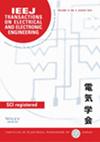求助PDF
{"title":"用于连体物体跟踪的模板提炼网络","authors":"Xiaofeng Lu, Gaoxiang Li, Zhaoyu Yan, Lin Teng","doi":"10.1002/tee.24178","DOIUrl":null,"url":null,"abstract":"<p>Various mainstream target tracking algorithms based on Siamese networks are gradually becoming a trend in the field of deep learning tracking due to their concurrent advantages of accuracy and speed. Most Siamese network-based trackers describe the tracking of a target object as a similar matching problem, and these trackers have achieved more advanced performance in several public tests. Most trackers often suffer from tracking drift or performance degradation owing to the non-updating of the template in the first frame and the target appearance encounters disturbing environments such as occlusion and drastic deformation. Therefore, to address this problem, this paper introduces a template updating mechanism and proposes a refine structure network based on the template updating of Siamese networks as well as the greater similarity of target features in two adjacent frames, which improves the tracking accuracy while limiting the amount of computation using an anchor-free method in order not to lose the tracking speed, and only needs to be trained by selecting the most suitable pre-training network, thus greatly reducing the amount of network computation. Meanwhile, in the application of the refine structure, with the aim of making the weight design of the target localisation module more reasonable, we propose a new Refine Head section and analyze and design the update threshold to optimize the overall network. This method is practiced in SiamFC++ algorithm, which firstly designs the template refine module, inputs the image that needs to be improved, and then outputs it to the Refine Head to complete the template update and applies it to the tracking of the subsequent frames, thereby constituting the SiamTRN (Template-Refine Network). According to the experiments, the improved structure of the method can effectively implement the refine module function and enhance the performance of the tracker on public datasets, such as OTB100, VOT2016, UAV123 and GOT-10 k. © 2024 Institute of Electrical Engineers of Japan and Wiley Periodicals LLC.</p>","PeriodicalId":13435,"journal":{"name":"IEEJ Transactions on Electrical and Electronic Engineering","volume":"19 10","pages":"1652-1660"},"PeriodicalIF":1.0000,"publicationDate":"2024-08-08","publicationTypes":"Journal Article","fieldsOfStudy":null,"isOpenAccess":false,"openAccessPdf":"","citationCount":"0","resultStr":"{\"title\":\"Template-Refine Network for Siamese Object Tracking\",\"authors\":\"Xiaofeng Lu, Gaoxiang Li, Zhaoyu Yan, Lin Teng\",\"doi\":\"10.1002/tee.24178\",\"DOIUrl\":null,\"url\":null,\"abstract\":\"<p>Various mainstream target tracking algorithms based on Siamese networks are gradually becoming a trend in the field of deep learning tracking due to their concurrent advantages of accuracy and speed. Most Siamese network-based trackers describe the tracking of a target object as a similar matching problem, and these trackers have achieved more advanced performance in several public tests. Most trackers often suffer from tracking drift or performance degradation owing to the non-updating of the template in the first frame and the target appearance encounters disturbing environments such as occlusion and drastic deformation. Therefore, to address this problem, this paper introduces a template updating mechanism and proposes a refine structure network based on the template updating of Siamese networks as well as the greater similarity of target features in two adjacent frames, which improves the tracking accuracy while limiting the amount of computation using an anchor-free method in order not to lose the tracking speed, and only needs to be trained by selecting the most suitable pre-training network, thus greatly reducing the amount of network computation. Meanwhile, in the application of the refine structure, with the aim of making the weight design of the target localisation module more reasonable, we propose a new Refine Head section and analyze and design the update threshold to optimize the overall network. This method is practiced in SiamFC++ algorithm, which firstly designs the template refine module, inputs the image that needs to be improved, and then outputs it to the Refine Head to complete the template update and applies it to the tracking of the subsequent frames, thereby constituting the SiamTRN (Template-Refine Network). According to the experiments, the improved structure of the method can effectively implement the refine module function and enhance the performance of the tracker on public datasets, such as OTB100, VOT2016, UAV123 and GOT-10 k. © 2024 Institute of Electrical Engineers of Japan and Wiley Periodicals LLC.</p>\",\"PeriodicalId\":13435,\"journal\":{\"name\":\"IEEJ Transactions on Electrical and Electronic Engineering\",\"volume\":\"19 10\",\"pages\":\"1652-1660\"},\"PeriodicalIF\":1.0000,\"publicationDate\":\"2024-08-08\",\"publicationTypes\":\"Journal Article\",\"fieldsOfStudy\":null,\"isOpenAccess\":false,\"openAccessPdf\":\"\",\"citationCount\":\"0\",\"resultStr\":null,\"platform\":\"Semanticscholar\",\"paperid\":null,\"PeriodicalName\":\"IEEJ Transactions on Electrical and Electronic Engineering\",\"FirstCategoryId\":\"5\",\"ListUrlMain\":\"https://onlinelibrary.wiley.com/doi/10.1002/tee.24178\",\"RegionNum\":4,\"RegionCategory\":\"工程技术\",\"ArticlePicture\":[],\"TitleCN\":null,\"AbstractTextCN\":null,\"PMCID\":null,\"EPubDate\":\"\",\"PubModel\":\"\",\"JCR\":\"Q4\",\"JCRName\":\"ENGINEERING, ELECTRICAL & ELECTRONIC\",\"Score\":null,\"Total\":0}","platform":"Semanticscholar","paperid":null,"PeriodicalName":"IEEJ Transactions on Electrical and Electronic Engineering","FirstCategoryId":"5","ListUrlMain":"https://onlinelibrary.wiley.com/doi/10.1002/tee.24178","RegionNum":4,"RegionCategory":"工程技术","ArticlePicture":[],"TitleCN":null,"AbstractTextCN":null,"PMCID":null,"EPubDate":"","PubModel":"","JCR":"Q4","JCRName":"ENGINEERING, ELECTRICAL & ELECTRONIC","Score":null,"Total":0}
引用次数: 0
引用
批量引用

 求助内容:
求助内容: 应助结果提醒方式:
应助结果提醒方式:


